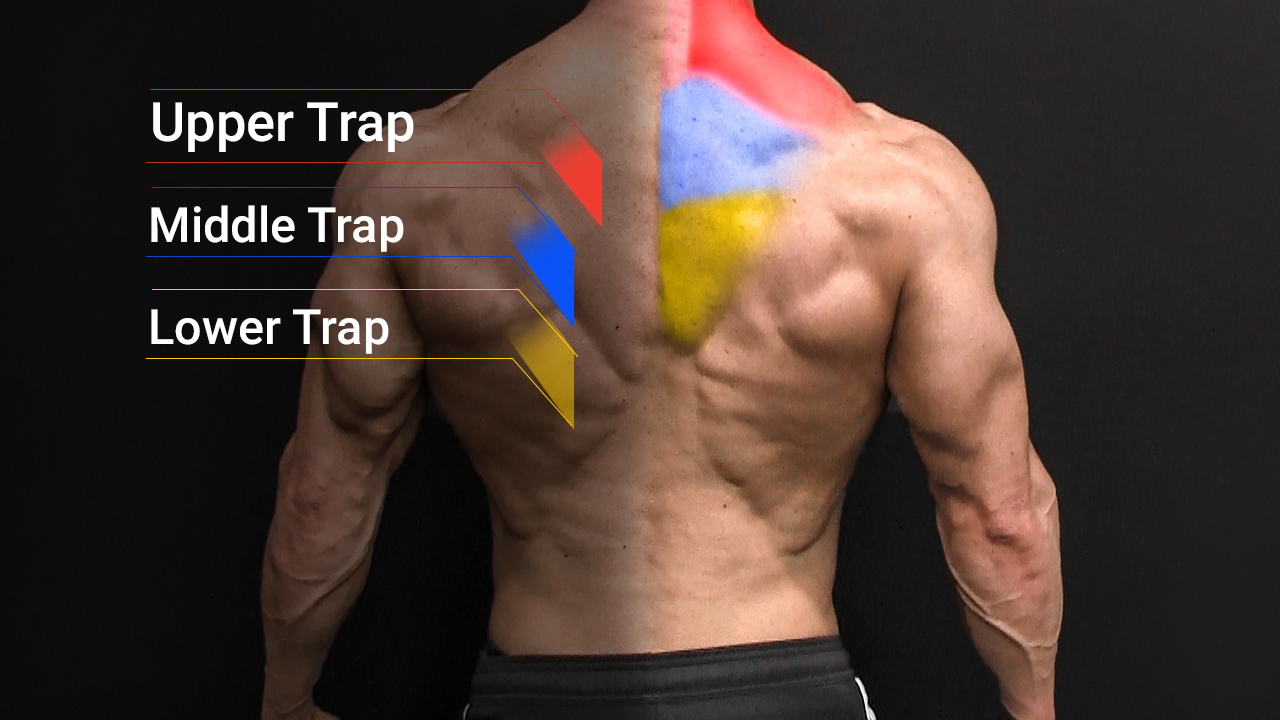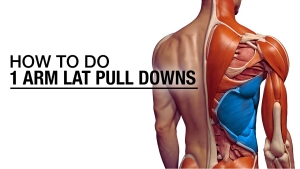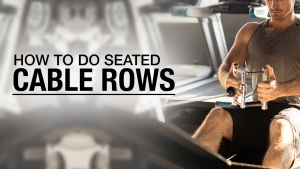
HOW TO HIT THE UPPER TRAPS
They might not have the commanding presence of the lats, but the traps are just as important for one reason: they bear the weight of the daily activities we tend to take for granted.
Traps support an upright posture and a number of functional movements like lifting your arms above your head.
Weak traps can impact your athletic performance as much as your day-to-day movements. They’re also great for building a well-balanced muscular physique.
So why do so many people think they can just skip right over the traps during their workouts?
Most people believe that certain compound exercises like Barbell Deadlifts and Barbell Rows are all that’s needed to take care of the traps. Do a few sets with heavy weights and you’re good to go, right?
Wrong!
The traps can be divided into three separate sections and each set of muscle fibers runs in a different direction. That means each one will respond best to certain exercises, not just a one-size-fits-all approach.
Let’s take a closer look at the traps and the upper traps, in particular. I’ll also break down the best ways to activate the upper traps and the best upper trap exercises.
UPPER TRAPEZIUS MUSCLE ANATOMY
If you want to see how a muscle functions, then follow the fibers. The traps are no exception.
When it comes to the anatomy of the traps, it’s important to look at the orientation of the fibers within the muscle.
The traps have three different zones – upper, middle, and lower – and this tells us that there are three different orientations of the fibers.
In other words, each set of muscle fibers runs in a certain direction.
While I am going to focus on providing you with the best exercises for the upper traps, I still want you to understand how all three sections of the traps work together through this trapezius muscle anatomy breakdown.
UPPER TRAPS

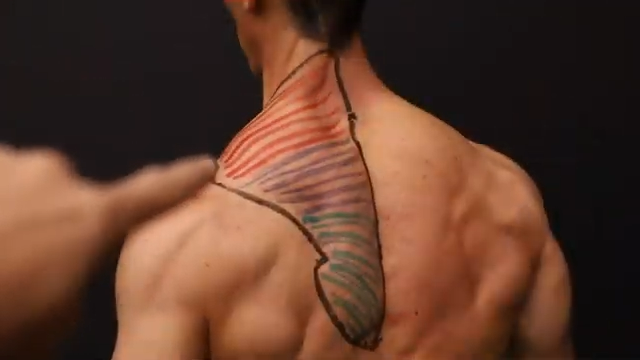
In the upper area of the traps, the orientation of the muscle fibers runs down and out. It starts at the back of your skull – where that bump is – and runs out towards the tip of your shoulder.
The upper traps assist with the following:
Scapular Elevation: The upper traps are responsible for elevating the shoulder blades (or scapulae), a motion that’s involved in shrugging your shoulders.
Scapular Upward Rotation: Along with other muscles like the serratus anterior, the upper traps contribute to upward rotation of the scapulae, which occurs when you lift your arms overhead.
Neck Rotation, Extension, and Lateral Flexion: The upper traps help extend the neck backward and allow for lateral flexion, which means tilting your head to the side.
Postural Support: The upper traps play a crucial role in maintaining posture. They help keep the shoulders back and the neck upright, especially important for those of us who spend a lot of time sitting or standing during the day.
MID TRAPS

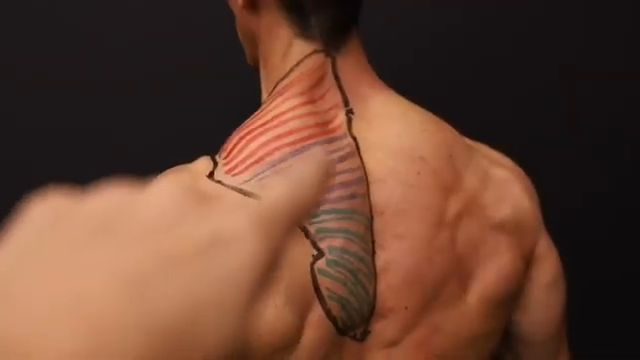
The middle part of your trapezius muscle, or mid traps begins at the bony bumps along the top part of your spine. Then, the muscle fibers stretch outwards and attach onto your shoulder blade.
The muscle fibers run side-to-side, which means they help with shoulder blade retraction. Imagine trying to hold a ball between your shoulders blades and you’ll see the middle traps hard at work.
LOWER TRAPS

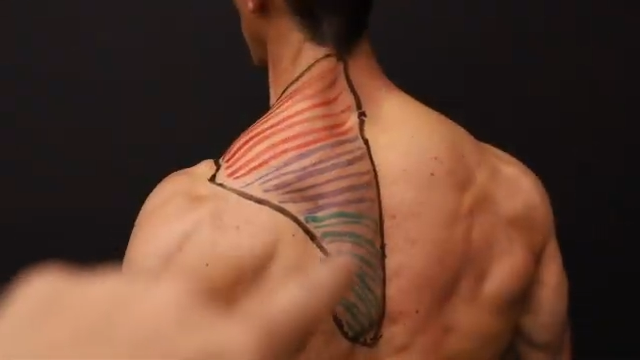
Finally, we have the lower trapezius muscles, usually referred to as the lower traps. These fibers have a downward orientation, and their most important job is to pull your shoulder blades down.
For example, imagine reaching your arms above your head. Your shoulder blades need to be depressed in order for this to happen and that’s what the lower traps do.
HOW TO TARGET THE UPPER TRAPS
The muscle fibers tell you everything you need to know about how a muscle functions.
But they also tell you how to properly activate the muscle to see results.
When it comes to upper traps, the most important thing I want you to realize about the direction or orientation of the fibers is this:
The upper traps are responsible for most things that gravity is trying to make more difficult for you.
From keeping your shoulders in place to maintaining proper posture, the upper traps bear the greatest load on a day-in, day-out basis.
Going a step further, that means that the upper traps are work horses and they respond best to higher tension loads.
With all that said, there are two things that you can do to properly target the upper traps and force them to grow.
DURATION (CARRYING)
First, you can focus on the duration of the exercise.
As I mentioned, the traps happen to be great for this because of the responsibilities of carrying your arms in the proper position all day.
Beyond that, they have a much higher capacity for load.
So, what type of exercise would be optimal to ensure a high load capacity AND long duration?
Carrying movements are going to be the first way I’d recommend targeting the upper trap muscles.
Aim for no less than 45-60 seconds time under tension. Additional time would be better. Ideally, you’ll get that up to two minutes per set. A fair warning: This is a high-intensity training technique.
STRENGTH (SHRUGGING)
Next up, while the upper traps love a good long duration exercise, they also respond really well to high tension loads at short durations.
More specifically, your upper traps love loading up a bar and pulling a heavy weight up toward your ears. After all, this is one of the main functions of the muscle.
This type of lift is perfect for building bigger and stronger traps.
But what type of lift is this exactly?
If you haven’t guessed already, I’m talking about a shoulder shrug movement, and not just the Barbell Shrug. Here are some movement variations of the shrug:
- Simple Shrugs
- Incline Dumbbell Shrug
- Overhead Shrug
- Cable Shrug
- Incline Shrugs
The big difference here is that shrugs are not necessarily measured in time, but in reps.
If you’re going heavy, perform 6 to 10 reps with proper technique.
If you’re lifting lighter weights, 15-20 reps will do the trick. Just be sure to pause at the top of each rep if you decide to go with light weights.
Overall, out of the 3-4 workouts you do each week, you need to give proper attention to the shoulders as a whole, but especially each section of the traps. I’d recommend 2-4 trap specific exercises during each shoulder workout.
BEST UPPER TRAP EXERCISES
You know how the upper traps function and which type of movements are best for activation.
Now, it’s time to cover the best upper trap exercises based on the orientation of the muscle fibers.
Here’s my list of trap exercises for when you’re targeting those upper traps.
FARMER’S WALK


HOW TO DO IT: Grab a pair of dumbbells. Stand upright with feet shoulder-width apart, holding a dumbbell in each hand. Maintain good posture as you walk at a controlled pace. Keep an upright position, avoiding excessive leaning or twisting. Keep the core tight. Maintain a strong grip to engage forearm muscles and improve grip strength. The exercise is over once you hit between one to two minutes of time or when you’re fatigued and unable to maintain form.
WHAT MAKES IT EFFECTIVE: This is one of those common exercises that taps into the upper trap’s natural ability to carry a load for a long period of time. One benefit of dumbbells here is that it also helps to isolate each side of the traps while improving grip strength.
TRAP BAR CARRY

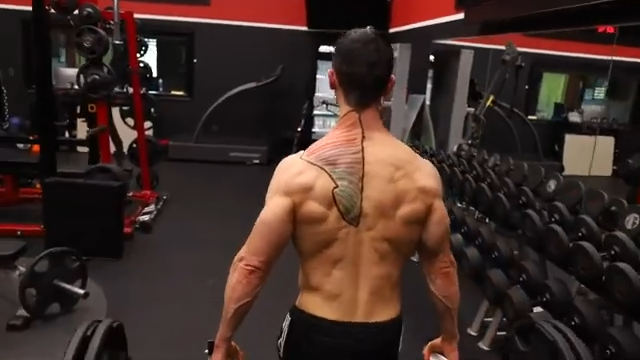
HOW TO DO IT: Stand in the center of a trap bar (hex bar). With your feet about as wide apart as your hips, bend down like you’re about to sit in a chair and grab the handles on each side of the bar. Now, hip hinge forward and stand up, lifting that trap bar with you. Walk in a straight line, taking small steps. Focus on proper posture and a tight core because this variation will challenge your stability and balance.
WHAT MAKES IT EFFECTIVE: One of the unique things about the Trap Bar Carry is that the arms are angled outward – not completely vertical. That means it’s reflecting more of the orientation that the fibers are naturally following. You’ll definitely feel this one in your upper traps.
KETTLEBELL CARRY

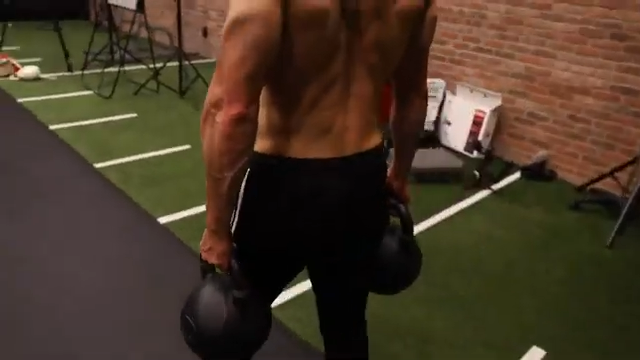
HOW TO DO IT: You’ll follow the same directions as the Farmer’s Carry, but the difference is that you’ll be using kettlebells with a neutral grip. Pay extra attention to your form as you walk because the kettlebells will challenge your grip and balance in a different way than dumbbells.
WHAT MAKES IT EFFECTIVE: The Kettlebell Carry targets the upper traps but given the wider handle, you’ll find that your grip strength is also challenged.
BARBELL SHRUG


HOW TO DO IT: Stand upright holding a barbell with an overhand grip. Place your hands slightly wider than shoulder-width. Keep the arms fully extended. Without bending your elbows or using your biceps, lift your shoulders towards your ears, hold briefly, and then lower them back down. The key is to ensure that the weight you’re using doesn’t affect your form. Start light and gradually increase the weight. One variation you could do is Smith Machine Shrugs for your upper traps, but if you have access to a barbell, I’d recommend that.
WHAT MAKES IT EFFECTIVE: One of the classic exercises for the traps, the Barbell Shrug taps into the other movement pattern – up and down – of the upper traps. You can also go heavier with this exercise, making it ideal for strength and muscle.
TRAP BAR SHRUG

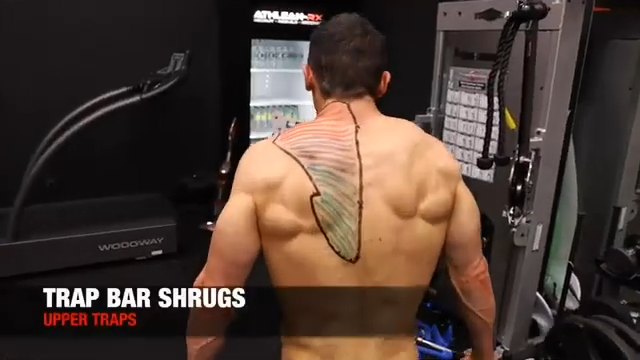
HOW TO DO IT: If you don’t have access to barbells, you can use a trap bar instead. Start by standing in the middle of a trap bar, feet hip-width apart. Hip hinge back and grasp the handles with your hands. Reverse the hip hinge and stand tall with arms fully extended. Without bending your elbows or using your arms to lift, shrug your shoulders up towards your ears. Hold for a moment at the top, then lower your shoulders back down. Go light until you’ve mastered the feel and technique of this one.
WHAT MAKES IT EFFECTIVE: They should call this one the Trap Activation Shrug because the stretch on the upper traps is intense with a trap bar. The reason for this is the arms are angled out – not vertical. You’ll also find that this one challenges your core strength. If you want to build huge traps, this is your exercise.
KNEELING DUMBBELL SHRUGS

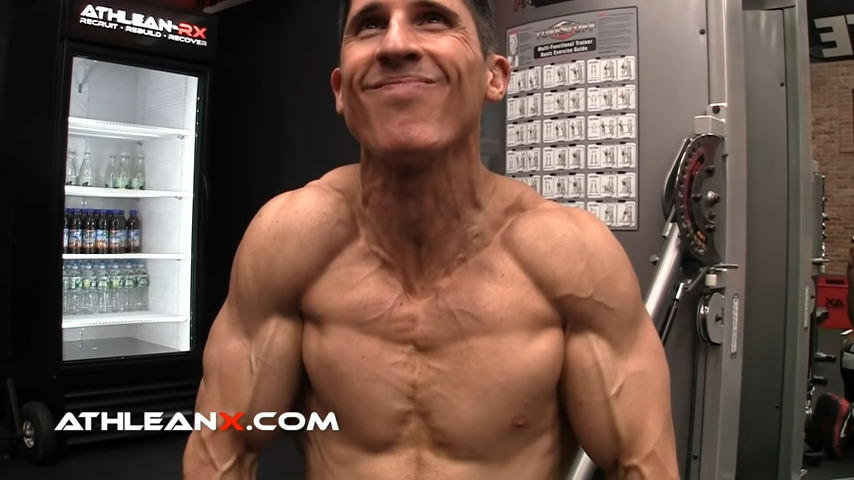
HOW TO DO IT: Start by getting down on your knees. Ensure that your body is upright and your core is engaged. Hold a dumbbell in each hand with your palms facing your body, and your arms fully extended. Without bending your elbows or using your arms to lift, shrug your shoulders upwards as if you’re trying to touch your ears. Hold this position briefly at the top, then slowly lower your shoulders back down to the starting position.
WHAT MAKES IT EFFECTIVE: By performing the Dumbbell Shrug from a kneeling position, not a standing position, you remove momentum from the equation. This is an excellent exercise for isolation. You can also perform this one using drop sets since the weights will be on the floor anyway.
TWISTING TRAP SHRUGS

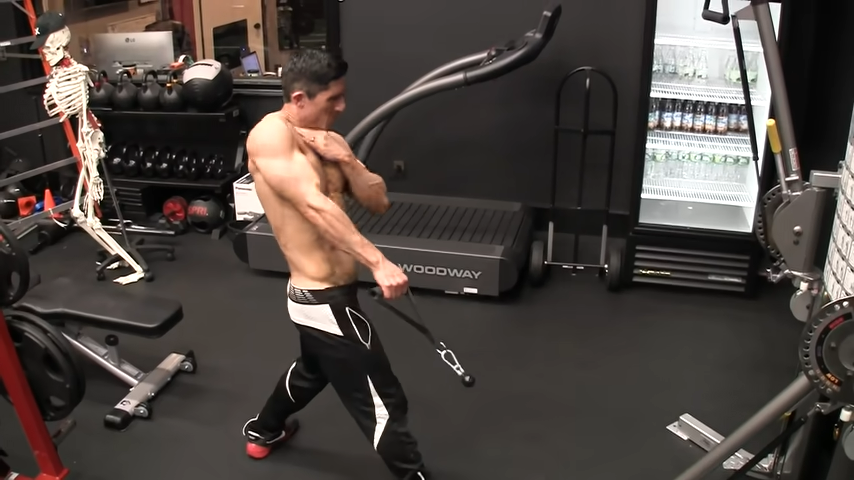
HOW TO DO IT: For this one, we’ll be using the cable machines. Stand perpendicular to a cable machine, holding a single handle. Begin raising the upper traps by trying to touch your shoulder to your ear. Now, twist back slightly and perform an upward rotation. Pause and stretch the upper trap then slowly return to the starting position.
WHAT MAKES IT EFFECTIVE: This variation of the shrug exercise allows for a maximum stretch throughout the entire range of motion while following the fibers of the upper traps.
DUMBBELL SHRUG ROWS


HOW TO DO IT: This one is a twist on the One-Arm Row. Holding a dumbbell in one hand, get into a bent-over row position. Your knees should be bent, hips driven back, and upper body bent over. Rest your other hand on an incline bench, rack, or something sturdy. Begin by shrugging the dumbbell up and then driving the elbow back and up. Squeeze at the top and slowly lower the dumbbell. Remember that this is a shrug first then a row. You should not be bringing your arm out to the side like with Lateral Raises.
WHAT MAKES IT EFFECTIVE: The first movement is started by the upper traps, and it’s maintained throughout the rowing part of the exercise. This is perfect for the traps since it’s a high-tension exercise.
Guys, if you want to build your upper traps – or any of your traps, for that matter – compound movement exercises like the Standard Deadlift alone just won’t cut it.
Focus on a well-rounded approach involving carrying and shrugging exercises, making sure to tap into the upper trap’s ability to excel with high tension, long duration movements.
Make these a part of your shoulder workout, and you’ll be very happy with your results.
Are you looking for a custom plan for your traps on shoulder days? We’ve got you covered. Check out our ATHLEAN-X program to see which is the best match for your goals and fitness levels.

- Each of the trap muscles have fibers that run along a specific orientation. The best way to target each section of the traps – upper, mid, and lower – is to find the exercises that move along that same orientation.
- For the upper traps, the orientation of the muscle fibers runs down and out. It starts at the back of your skull – where that bump is – and runs out towards the tip of your shoulder girdle.
- Given the direction of the muscle fibers, the upper traps help with scapular elevation, scapular upward rotation, neck extension and lateral flexion, and overall postural support.
- There are two types of movements that work along the same orientation of the muscle fibers: carrying and shrugging exercises.
- I’d recommend incorporating some of these carrying exercises into your routine for one to two minutes per set: Farmer’s Walk, Trap Bar Carry, and Kettlebell Carry
- To build strong traps and increase muscle growth, perform shrugging exercises such as Barbell Shrugs, Kneeling Dumbbell Shrugs, and Dumbbell Shrug Rows. You can use more weight with these exercises but be sure to maintain proper form.
UPPER TRAP EXERCISES FAQS
The upper traps respond the best to high tension loads. You can accomplish this with movements that focus on carrying and shrugging.
Carrying exercises include the Farmer’s Walk, Trap Bar Carry, and Kettlebell Carry.
Shrugging exercises include the Barbell Shrug and a shrug variation like the Trap Bar Shrug or Kneeling Dumbbell Shrug.
No, while the primary target area of shrugs is the upper trapezius muscles, they also engage other muscles to some extent.
Other muscles involved include stabilizer muscles. More specifically, shrugs will activate the levator scapulae, rhomboids, and the muscles of the neck.
If your goal is to find upper body movements that target your upper back and upper traps, you should focus on incorporating carrying and shrugging movements into your workouts.
Carrying exercises will provide the high tension, long duration stimulus the upper traps need while shrugging exercises build strength and muscle.
While the shrug is one of the most important exercises for developing your upper traps, it’s still possible to target the muscle with carrying movements such as the Farmer’s Walk and certain compound lifts including the Overhead Press and Wide Grip Pull-Ups.
To develop thicker upper traps, you should focus on alternating between carrying and shrugging exercises throughout your shoulder workout.
For example, you can start the workout with heavier weights and a shrugging movement such as the Trap Bar Shrug then continue to exhaust the muscle with a carrying exercise like the Farmer’s Walk. You can use drop sets for maximum intensity.

Jeff Cavaliere M.S.P.T, CSCS
Jeff Cavaliere is a Physical Therapist, Strength Coach and creator of the ATHLEAN-X Training Programs and ATHLEAN-Rx Supplements. He has a Masters in Physical Therapy (MSPT) and has worked as Head Physical Therapist for the New York Mets, as well as training many elite professional athletes in Major League Baseball, NFL, MMA and professional wrestling. His programs produce “next level” achievements in muscle size, strength and performance for professional athletes and anyone looking to build a muscular athletic physique.
















